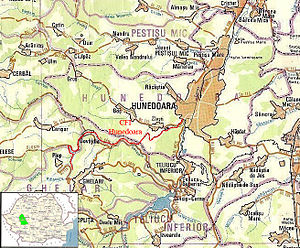Transylvanian mining railway
| CFI Hunedoara | |||||||||||||||||||||||||||||||||||||||||||||||||||||||||||||||||||||||||||||||||||||||||||||||||||||||||||||||||||||||||||||||||||||||||||||||||||||||||||||||||||||||||||||||||||||||||||||||||||||||||||||||||||||||||||||||||||||
|---|---|---|---|---|---|---|---|---|---|---|---|---|---|---|---|---|---|---|---|---|---|---|---|---|---|---|---|---|---|---|---|---|---|---|---|---|---|---|---|---|---|---|---|---|---|---|---|---|---|---|---|---|---|---|---|---|---|---|---|---|---|---|---|---|---|---|---|---|---|---|---|---|---|---|---|---|---|---|---|---|---|---|---|---|---|---|---|---|---|---|---|---|---|---|---|---|---|---|---|---|---|---|---|---|---|---|---|---|---|---|---|---|---|---|---|---|---|---|---|---|---|---|---|---|---|---|---|---|---|---|---|---|---|---|---|---|---|---|---|---|---|---|---|---|---|---|---|---|---|---|---|---|---|---|---|---|---|---|---|---|---|---|---|---|---|---|---|---|---|---|---|---|---|---|---|---|---|---|---|---|---|---|---|---|---|---|---|---|---|---|---|---|---|---|---|---|---|---|---|---|---|---|---|---|---|---|---|---|---|---|---|---|---|---|---|---|---|---|---|---|---|---|---|---|---|---|---|---|---|
| Line length: | 16 km (9.9 mi) | ||||||||||||||||||||||||||||||||||||||||||||||||||||||||||||||||||||||||||||||||||||||||||||||||||||||||||||||||||||||||||||||||||||||||||||||||||||||||||||||||||||||||||||||||||||||||||||||||||||||||||||||||||||||||||||||||||||
| Track gauge: | 760 mm (2 ft 5 15⁄16 in) | ||||||||||||||||||||||||||||||||||||||||||||||||||||||||||||||||||||||||||||||||||||||||||||||||||||||||||||||||||||||||||||||||||||||||||||||||||||||||||||||||||||||||||||||||||||||||||||||||||||||||||||||||||||||||||||||||||||
| Maximum incline: | 25‰-27‰ or 2.5 %-2.7 % | ||||||||||||||||||||||||||||||||||||||||||||||||||||||||||||||||||||||||||||||||||||||||||||||||||||||||||||||||||||||||||||||||||||||||||||||||||||||||||||||||||||||||||||||||||||||||||||||||||||||||||||||||||||||||||||||||||||
| Minimum radius: | 40–50 m (131.2–164.0 ft) | ||||||||||||||||||||||||||||||||||||||||||||||||||||||||||||||||||||||||||||||||||||||||||||||||||||||||||||||||||||||||||||||||||||||||||||||||||||||||||||||||||||||||||||||||||||||||||||||||||||||||||||||||||||||||||||||||||||
| Maximum speed: | 20 km/h (12 mph) | ||||||||||||||||||||||||||||||||||||||||||||||||||||||||||||||||||||||||||||||||||||||||||||||||||||||||||||||||||||||||||||||||||||||||||||||||||||||||||||||||||||||||||||||||||||||||||||||||||||||||||||||||||||||||||||||||||||
|
|||||||||||||||||||||||||||||||||||||||||||||||||||||||||||||||||||||||||||||||||||||||||||||||||||||||||||||||||||||||||||||||||||||||||||||||||||||||||||||||||||||||||||||||||||||||||||||||||||||||||||||||||||||||||||||||||||||
The Transylvanian Mining Railway was a local interest narrow-gauge (760mm gauge) railway which was the first mining railway in Transylvania. This railway was built to ease the transportation of the iron ore mined from the iron ore mines from Ghelari to the blast furnace in Govăjdia and the ironworks from Hunedoara. This railway was also known as the "Hunedoara-Ghelari Local Interest Railway", "CFI Hunedoara", "Mocăniţa Hunedoara", "Calea Ferată Minieră Ardeleană", "Erdélyi Bányavasút" in Hungarian. The line was 10 km (6.2 mi) long from Hunedoara to Govăjdia and another 6 km (3.7 mi) from Govăjdia to Retişoara terminus. This line was used by mixed trains that carried both iron ore and passengers from Ghelari to Govăjdia and Hunedoara's ironworks. They've also transported dolomite and limestone from the limestone quarries near Govăjdia to the ironworks.
Earlier the iron ore transport from the mines in Ghelari to the chutes and tipplers of the ironworks from Govăjdia was done by horses with two baskets attached on each side or other hired carriers until the demand and the price for the transported iron ore rose in 1859 from 18.6 Fillér/1 quintal to 53.6 Fillér/1 quintal of transported iron ore. Because of the rising expenses for the transportation of iron ore, the administration was forced to replace the transport system.
In 1859 they've started digging a 600 metre long tunnel from the main mine in Ghelari to Retişoara's valley which was completed in 1866 at a cost of 111768 Krones and 50 Fillérs. Meanwhile, they've built a 790 metre long, 633mm gauge railway specially for horse-drawn ore cars. At the end of the line they've built a 160 m long chute where they've dumped the iron ore to the Retişoara's valley floor which was 90–100 m lower than the level of the tunnel's exit. After the ore was dumped down the chute, the carriers transported the ore to the Govăjdia Blast Furnace which was 4 km away.
...
Wikipedia

